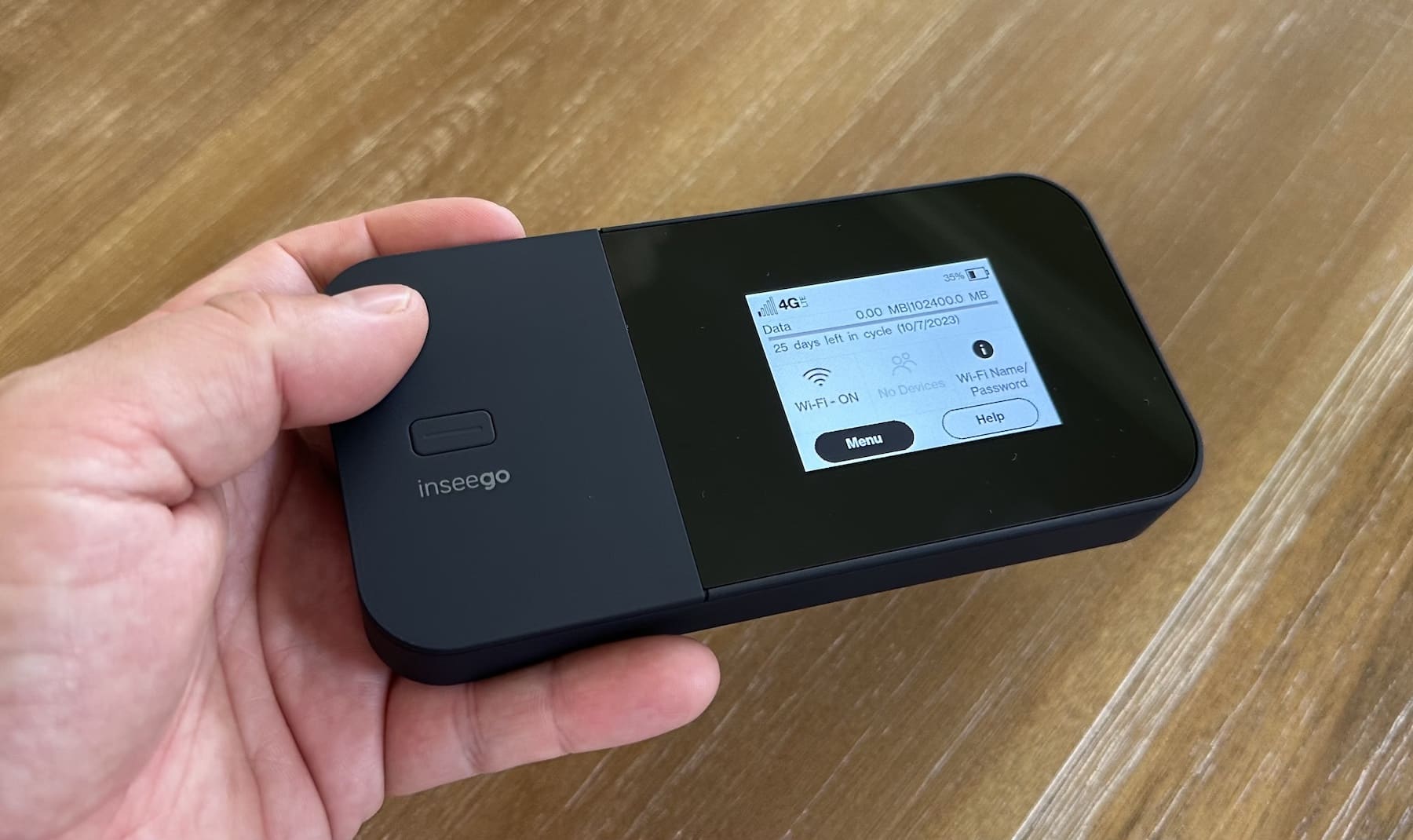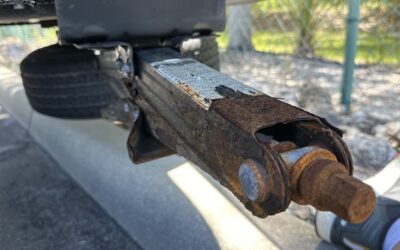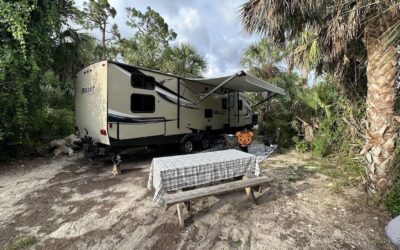As a remote worker in cyber security traveling part-time in our RV, I need to have reliable internet access from our campsite. If I were living the RV life full time, I would 100% invest the $1500+ in a cellular router and external antenna to create a configuration that achieved both reachability & redundancy. However, on a budget I needed to make some informed decisions and sacrifices. At the end of the day, I chose to invest in redundancy.
How do I get better internet coverage in my RV?
Staying connected means that you’ll need to invest in redundancy. Redundancy is achieved by increasing your options for connectivity. The main two types of internet connections come from cellular and satellite. My configuration uses both of these. Additional redundancy can be achieved by incorporating multiple providers; for instance, data plans from both Verizon and T-Mobile. Though I may add these features down the road, to start I have invested in a Starlink and Verizon cellular connection.
Which cellular carrier should I choose for my RV?
If you’re looking for a magic bullet, keep looking. There’s no single carrier that will cover every scenario. In fact, that’s why most permanent RV residents carry data plans with 2 or more carriers and use specialized hardware to bridge them together. However, if you’re on a budget like me then you may be forced to make the tough choice.
I landed on Verizon after carefully reviewing the destinations and regions that I would be most likely to frequent most often. Our family loves traveling to the Southeastern US in areas such as Smoky Mountain National Park and the mountains of North Georgia. After I planned our first trip, I reviewed the coverage maps for each of our campsite locations. I looked for the areas with the most LTE coverage, not 5G. Why? Because it will provide broader coverage and even though 5G would be nice to have I will be able to get the job done on LTE.
For instance, 5G coverage is much broader with T-Mobile. The drawback is that where T-Mobile doesn’t have 5G coverage they often have dead zones. AT&T and Verizon have less 5G coverage but their LTE network reaches far and wide.
Another consideration that I took into account was that I was already with T-Mobile for our cell phones. By going with another provider, I expanded by coverage options simply by choosing to have data and voice+data on different carriers.
At the end of the day, for us, Verizon beat AT&T ever so slightly. And because I was already on T-Mobile for our cell phones I was increasing redundancy by choosing a different carrier than T-Mobile.
Should I get a hotspot or cellular router for my RV?
The answer to that question is cellular router. But, if you’re on a budget that may not be a viable option. For us, since we are planning to be traveling part time we opted to get a cellular hotspot on Verizon and pair it with Starlink for redundancy.
If you want to get the best cellular connection possible in remote locations, you’re going to want to invest some dough in a reliable cellular router, external antenna, and data plans from multiple carriers.
Choosing a Hotspot
After selecting a carrier, you’ll be able to explore their available hotspot hardware options (also called MiFi). Carriers typically offer a number of options, some of which are considered “flagship”. Their flagship models will feature the most recent cellular modems which are capable of the fastest speeds on the most number of cellular bands.
Even if you’re on a budget, I highly recommend that you choose a newer model on the best modem that you can afford. Hotspots can often be considered antiquated within a couple of years as cellular technology progresses quickly. For Verizon, you want to be ready to use their latest 5G bands as they become more widely available.
The Inseego MiFi X Pro 5G UW Overview
The M3100, also called the Inseego MiFi X Pro 5G UW, that is offered by Verizon is currently considered their flagship hotspot device. Let’s dive into the hardware and why that is.
The Qualcomm X65 Modem
When choosing a device, arguable the most important component is the cellular modem. The Inseego MiFi X Pro 5G UW features the latest Qualcomm X65 modem. This modem is capable of connecting to the most 5G bands and has a theoretical 10 Gbps peak speeds (which you’ll never achieve). It’s little brother, the X62 is capable of 4.6 Gbps peak speeds. Both modems are capable of mmWave sub-6 aggregation which is an important feature for continued network expansion. Lack of this capability is a reason to stay away from any older or cheaper devices unless you want to replace it fairly soon.
Integrated RJ45 Ethernet Port
The Inseego MiFi X Pro 5G UW has an integrated ethernet port as well. It’s not uncommon for employers to enforce a policy that requires ethernet connectivity vs Wifi — and if that’s you then you’re going to want this feature. Another reason that the integrated ethernet port is beneficial is that it allows you to connect the MiFi hotspot to an external router’s WAN port. This means that you can use a more robust wireless router to expand your range and total connected device capability (this hotspot allows 32 wireless clients natively).
Once caveat is that to use the ethernet port on this device is that your hotspot must be connected to a power supply and not on battery.
WiFi 6 Capability (802.11ax)
The M3100 has built-in WiFi 6 (802.11ax) providing some of the fastest speeds available for your connected devices. It supports up to 32 wireless clients at at time. This capability could be expanded by utilizing the integrated RJ45 ethernet port and connecting it to a third party router.
Battery Life
The Inseego MiFi X Pro 5G UW comes with a 5050 mAh removable battery. The specs claim that it will run for up to 13 hours while in use and up to 3 days on standby. This battery time could easily be expanded through the use of one or more USB-C external battery packs, if necessary. For us, we’ll be hooking up to our shoreline in most situations and this won’t be a big issue. However, if you do more boon docking or off grid camping then you may want to consider how you will keep it powered for multi-day trips.
External antenna capability? Nope.
One of the biggest shortcomings of this hotspot is the lack of capability for connecting an external antenna. The ability to connect to an antenna that is mounted to the exterior of your RV / travel trailer could make or break your ability to connect. With an external antenna, you can essentially pin point and lock on to a signal in a directional manner. With the Inseego MiFi Pro 5G UW, you are limited to the internal 4×4 MiMo antennas and it will function very similar in nature to a mobile phone as far as its capabilities.
Real World Use
Okay, the specs look great but how does it perform in the real world? I’ll be testing this device at sites in Florida, Georgia, and Tennessee in October/November 2023. I’ll update this post with my findings as we travel. Stay tuned!




0 Comments